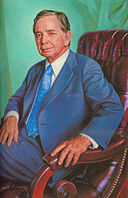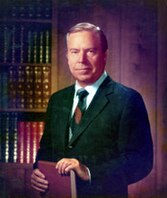U.S. House election, 1974
|
|
||||||||||||||||||||||||||||||||||
|---|---|---|---|---|---|---|---|---|---|---|---|---|---|---|---|---|---|---|---|---|---|---|---|---|---|---|---|---|---|---|---|---|---|---|
|
||||||||||||||||||||||||||||||||||
|
All 435 seats to the United States House of Representatives 218 seats were needed for a majority |
||||||||||||||||||||||||||||||||||
|
||||||||||||||||||||||||||||||||||

|
||||||||||||||||||||||||||||||||||
|
||||||||||||||||||||||||||||||||||
The 1974 United States House of Representatives elections was an election for the United States House of Representatives in 1974 that occurred in the wake of the Watergate scandal, which had forced President Richard Nixon to resign in favor of Gerald Ford. This scandal, along with high inflation, allowed the Democrats to make large gains in the midterm elections, taking 49 seats from the Republicans and increasing their majority above the two-thirds mark.
Notable freshmen included future Transportation Secretary Norm Mineta and many future Senators: Chris Dodd (D-Conn.), Paul Simon (D-Ill.), Chuck Grassley (R-Iowa), Tom Harkin (D-Iowa), Paul Tsongas (D-Mass.), Max Baucus (D-Mont.), Larry Pressler (R-S.D.), Bob Krueger (D-Tex.), and Jim Jeffords (R-Vt., later Independent).
Future president Bill Clinton was the Democratic nominee for a district in Arkansas, but lost.
The Fall of 1974 was a difficult time for many Republican Party leaders, some of whom including Ronald Reagan and others began to contemplate the possibility of renaming the party or otherwise changing its appeal to the United States. Reagan also urged his fellow Republicans to consider holding a national convention sometime in 1975 to rebuild the party however no such convention was ever held.
...
Wikipedia


